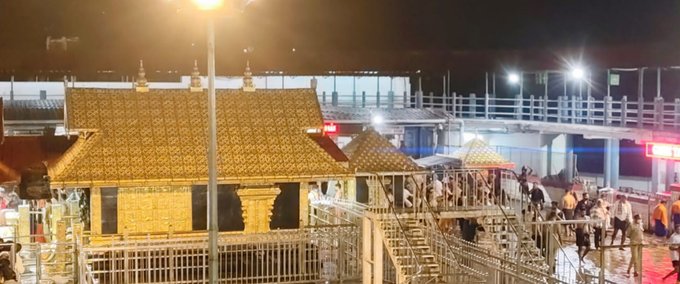Sabarimala Master Plan Draft: After the Eighteen Steps, Only the Temple; 4% of Buildings to Be Demolished

Pathanamthitta: The proposed Sabarimala Master Plan strongly emphasizes the idea that once a pilgrim climbs the sacred 18 steps, there should be nothing but the temple itself. As part of this vision, several existing structures within the defined core area will be demolished, including the flyover currently used to channel devotees.
Six months ago, the Travancore Devaswom Board had experimentally implemented a system where devotees were directed for darshan through the Balikkalpura. The new plan seeks to introduce this practice in a more scientific and structured manner. According to the guidelines, all buildings within a 21 dand (56.7 meters) radius of the temple must be removed. This restriction applies to any construction above the thazhikakudam (sanctum roof).
The detailed blueprint was first presented during the Global Ayyappa Conference held at Pamba.
Forest Shrine Vision: ₹778.17 Crore Project
Currently, the Sabarimala temple is surrounded by concrete buildings, making it difficult to view the shrine in its original sacred setting. Recognizing this, a team of experts from the College of Engineering, Thiruvananthapuram, prepared a layout based on the Master Plan.
The blueprint aims to preserve the identity of Sabarimala as a Kananakshetram (forest shrine) to the maximum extent possible. The project is estimated to cost ₹778.17 crore and is recommended to be implemented in three phases by the High-Power Committee for Sabarimala.
Within the 21 dand radius are currently located the residence of the Tantri (chief priest), the Melsanthi (head priest), the executive office, and rooms for Devaswom guards—all of which must be demolished. However, the plan proposes setting up resting quarters for the Tantri and Melsanthi within the same zone, though toilets will not be permitted.
The nadappanthal (covered pathway) at the Sannidhanam will also undergo a complete redesign. The nearby building known as Pranavam (Pilgrim Centre-1) will be fully demolished.
Accommodation Restricted to 10,000 at Sannidhanam
With Nilakkal being developed as the main base camp, accommodation facilities at the Sannidhanam will be drastically reduced—from the current 65% of total pilgrim facilities to just 19%. At present, nearly 9,000 people, including police, government staff, and Devaswom employees, stay at the hilltop.
This number will be cut down to around 6,000, while pilgrim accommodation will be capped at 4,000. According to the blueprint, no more than 10,000 people will be allowed to stay at the Sannidhanam at any given time.
